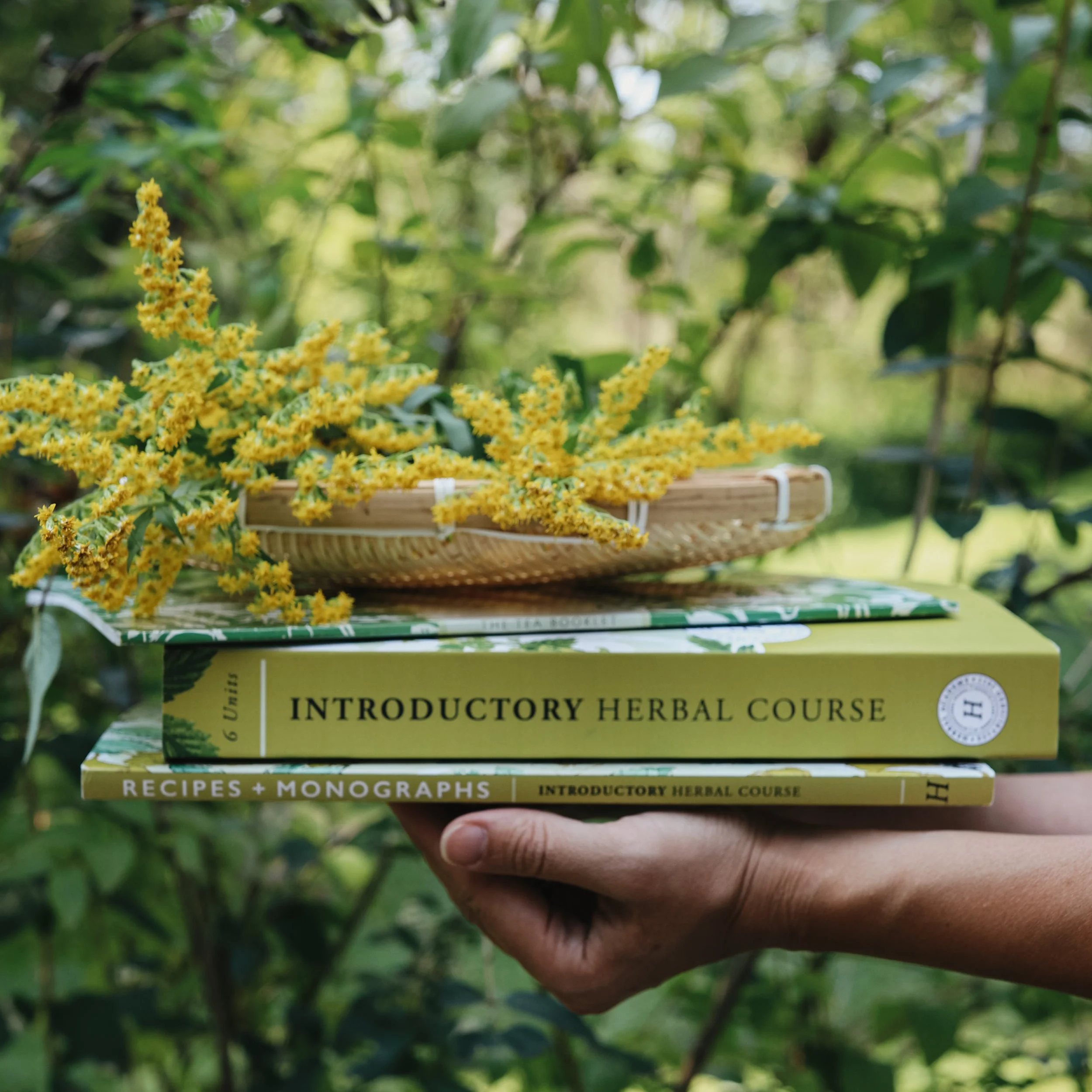How to Start Learning About Herbalism
The book in this photo is one of my favorites. It is called Foraging & Feasting by Dina Falconi, an herbalist.
It is a comprehensive guide that dives into the world of wild edible plants. It emphasizes the importance of foraging sustainably and encourages readers to connect with nature. The book details various foraging techniques, highlighting a diverse range of edible species found in North America. Each plant featured is accompanied by illustrations, recipes, and information on its habitat and uses, making it accessible for both novices and seasoned foragers. Overall, it serves not only as an educational resource but also as an invitation to explore the flavors and benefits of nature’s bounty.
Herbalism is a fascinating way to connect with nature, promote health, and enhance your holistic lifestyle. Whether you’re interested in using herbs for cooking, natural remedies, or skincare, getting started with herbalism can be both enjoyable and rewarding. Here’s a guide to help you embark on your herbal journey.
1. Understand the Basics of Herbalism
Begin by familiarizing yourself with the fundamentals of herbalism. Learn the difference between various forms of herbalism, such as traditional Western herbalism, Chinese herbal medicine, and Ayurvedic practices. Each system has its own philosophies and applications.
A good starting point is to explore online resources, such as articles, podcasts, and introductory videos that cover the history and principles of herbalism.
2. Choose Your Focus
Herbalism is a broad field, so consider what areas interest you most. Are you drawn to culinary herbs, medicinal plants, or perhaps the creation of natural skincare products? Identifying your focus will help tailor your learning to suit your interests.
3. Start a Herbalism Journal
Keeping a journal is a wonderful way to document your learning process. Write down what you discover about different herbs, their properties, and uses. You can also note your experiences with any herbs you try, whether in food, teas, or topical applications. This practice will help you develop a deeper connection with the plants and enhance your learning.
4. Explore Local Flora
Take some time to observe and identify the plants in your surrounding environment. Join local herb walks or nature hikes, where you can learn to identify and understand the benefits of wild herbs. Being familiar with the plants that grow in your area can provide a practical understanding of herbalism. One amazing book that helped me better understand wild plants is Natures Garden and The Foragers Harvest, both by Samuel Thayer, a well-known wild food forager who explains in extreme detail all the wild foods and functions in his local areas.
5. Read Books on Herbalism
Invest in good herbalism books that resonate with your focus area. Look for guides that offer detailed information on specific herbs, formulation techniques, and safe practices. I highly recommend checking out The Herbal Academy- Introduction to Herbalism. It was a wonderful course that went over the basics of herbalism, provided recipes and tools to begin your herbalism journey.
6. Join a Community
Connect with like-minded individuals and other herbal enthusiasts by joining local or online herbalism groups. Participating in workshops, classes, or forums can provide you with invaluable insights, tips, and support throughout your herbal journey. Join my Facebook group Herbalism For All to join a community to learn, share and support one another on our herbal journeys.
7. Experiment Safely
As you learn about different herbs, consider incorporating them into your daily life. Start by experimenting with simple teas, tinctures, or infused oils while ensuring you adhere to safety guidelines. Be aware of any allergies or contraindications, and when in doubt, consult an experienced herbalist or health professional.
8. Attend Workshops and Courses
Once you’ve built a foundational knowledge of herbalism, consider enrolling in more structured courses or workshops like the courses at The Herbal Academy. These can provide hands-on experience and in-depth learning about specific herbs and their applications. Look for local herbalists or institutions offering courses that suit your interest.
9. Practice Mindful Sourcing
If you plan to create your own herbal products, prioritize sourcing materials sustainably. Understand the importance of ethical harvesting practices and support local farmers or reputable suppliers. One of my favorite herbal suppliers is Starwest Botanicals. Being mindful about where your herbs come from not only helps protect the environment but also enhances the quality of the products you create.
10. Enjoy the Journey
Above all, remember that learning about herbalism is a journey, not a destination. Take your time, enjoy the process, and don’t hesitate to reach out to the herbal community for guidance and support.
By immersing yourself in the world of herbs, you’ll uncover a wealth of knowledge that can enrich your life and connect you more profoundly with nature. Happy herbal exploring!
*Post may contain affiliate links. If it does these links are to products I have personally used and highly recommend.


